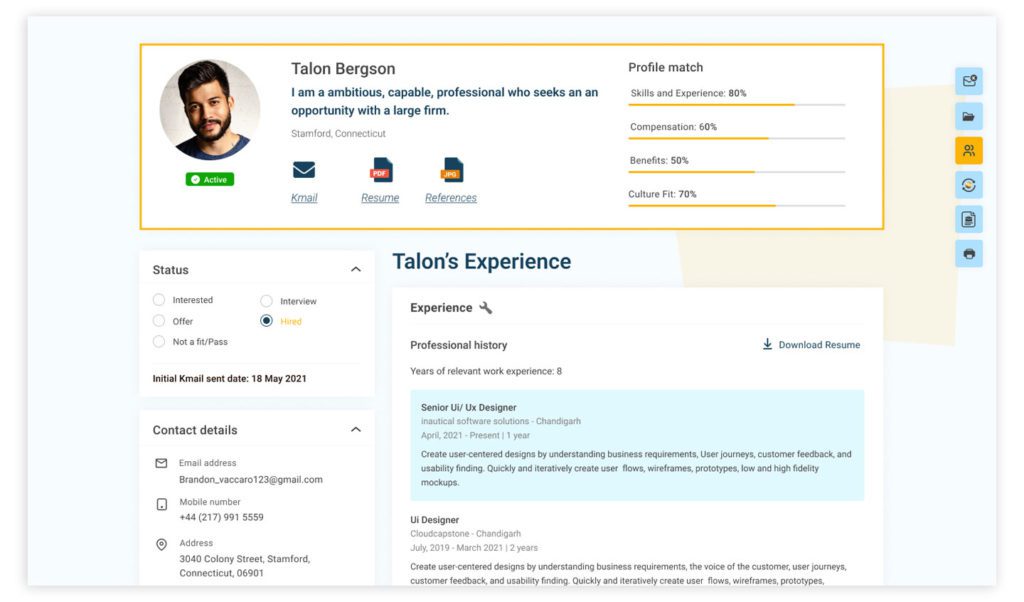Our Secret
Computer scientists and mathematicians have long recognized that the best analytical techniques cannot compensate for inferior “inputs.” The saying holds that “garbage in” leads to “garbage out.” Using deep and diverse industry experience and cutting-edge research, KangarooStar was designed from the ground-up to ensure that the inputs we use to facilitate matches lead to a cycle of learning that improves matches for job seekers and employers. We also take a decidedly supportive approach to job search. Finding a job or candidate to add to one’s team can be a time-consuming, difficult, trying, and emotionally taxing process.
By taking the time to get to know your needs, preferences, and unique attributes and capabilities better, we help you discover your deeper employment needs and opportunities in the context of a constantly evolving market for labor. Throughout the process, we provide support, encouragement, and analysis.
KangarooStar is the future of hiring. We focus on great assistants, great partnerships, and great matches!
By taking the time to get to know your needs, preferences, and unique attributes and capabilities better, we help you discover your deeper employment needs and opportunities in the context of a constantly evolving market for labor. Throughout the process, we provide support, encouragement, and analysis.

How do we match better than other companies?
Combining deep industry insights with academic research and leading-edge methodologies, KangarooStar begins each search by asking the “right” questions concerning each employer’s and job seeker’s needs and preferences. This process gathers better data, which facilitates better analyses, and yields better matches.
We match employers and job seekers to a high degree of fit across four categories: Skills and Experiences, Compensation Expectations, Benefits Expectations, and Culture Fit.
Skills and Experience
Employers indicate what kind of skills and experience they’re looking for and candidates are matched on a 100% scale according to this metric. The wrench icon indicates when a candidate possesses relevant skills beyond those required.
Compensation Expectations
We compare the base and bonus expectation ranges of the employer and the job seeker. If a job seeker’s compensation expectations are “in the range” provided, they will see a bullseye. This information affords the employer unique insights to create a compelling offer given the candidate’s specific compensation expectations.
Benefits Expectations
Top talent’s demand for a range of benefits is increasing. We calibrate these demands in a summary metric and show only those that match the company’s offerings. In aggregate analyses, employers learn what the job market is demanding in terms of benefits across key demographics and job roles. Job seekers, in turn, get feedback on market standards and cross-industry variation in benefits offered. If the employer provides benefits beyond those requested, a job seeker will see a heart icon.
Culture Fit
Because “fit” is so important, we developed a unique set of proprietary measures to capture the deep, underlying preferences of job seekers and employers concerning their work environment, motivations, drivers, and determinants of success.
Academy Ribbon
Academy companies are organizations that you believe excel at attracting, recruiting, training, onboarding, and developing talent. Hence, it is likely your company may prefer to see applications from job seekers with previous work experience from these firms or others like them. Using collaborative filtering and analogic reasoning, we use this data to facilitate a better match.
Why Executive Assistants?
We know that executive assistants are a critical role in any organization and, indeed, they are amongst the largest occupation categories. Finding the “right” executive assistant requires consideration of skills, tools, and intangible soft skills and fit. Executive assistants must match well with the personality and demands of the executives they support and assist.

